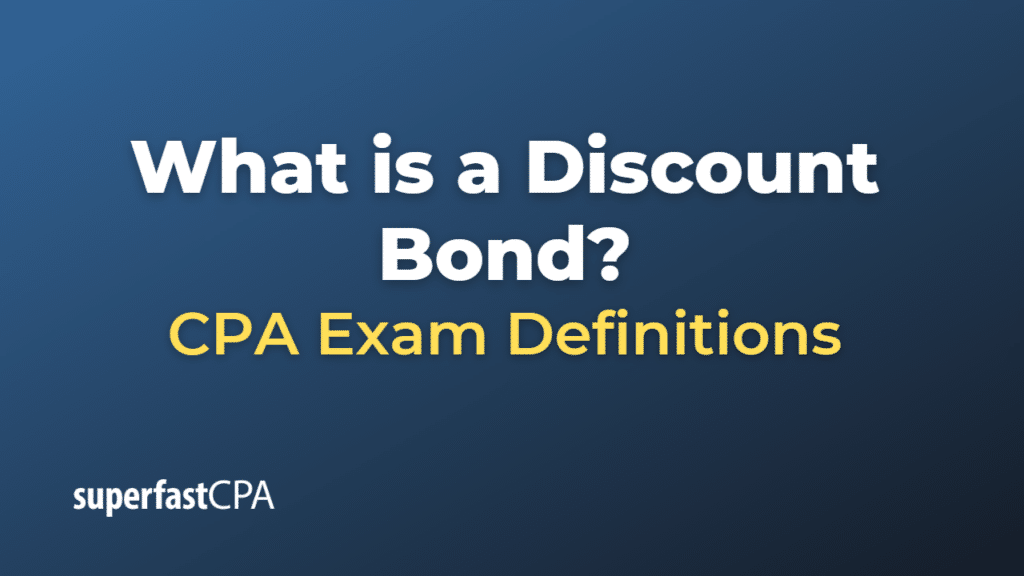Discount Bond
A discount bond, also known as a “deep discount bond”, is a bond that is purchased for less than its face value. The face value (also called par value) is the amount that will be paid back to the bondholder at maturity.
The reason a bond might be sold at a discount from its face value could be due to several reasons. For instance, the interest rate the bond pays (coupon rate) might be lower than the current market interest rates for similar bonds, or the financial condition of the issuer might have deteriorated since the bond was issued, raising concerns about the issuer’s ability to pay back the bond.
When the bond reaches maturity, the issuer is obligated to pay the face value of the bond to the bondholder. The difference between the purchase price (discounted price) and the face value represents the investor’s return, or the “yield to maturity.”
For example, suppose a bond has a face value of $1,000 and matures in ten years. If an investor purchases this bond for $900, the bond is said to be a discount bond. When the bond matures, the investor will receive the $1,000 face value, realizing a profit of $100. This $100 represents the investor’s return for holding the bond to maturity and serves in lieu of or in addition to regular interest payments.
The discount on a bond can be a way for companies to raise funds at a lower cost, as they are not required to make interest payments. For investors, it can be a way to earn a potentially higher return, but it may come with more risk, especially if the issuer’s creditworthiness is questionable.
Example of a Discount Bond
Let’s consider a specific example of a discount bond.
Let’s say XYZ Corporation issues a bond with a face value of $1,000 that matures in 5 years. However, this bond doesn’t pay any interest (this would make it a zero-coupon bond). To make this bond appealing to investors, XYZ Corporation sells the bond for a discounted price of $800.
An investor, seeing potential value, purchases the bond for $800. Over the next 5 years, the bond does not pay any interest. However, when the bond matures, XYZ Corporation is obligated to pay the bond’s face value, which is $1,000.
The investor thus makes a $200 profit on the investment ($1,000 – $800). The profit serves as the effective interest earned by the investor, and the rate of return can be calculated by using the yield to maturity formula.
This example showcases how a bond might be sold at a discount and how an investor can profit from purchasing discount bonds. However, it’s essential to remember that while discount bonds can provide a higher return, they can also carry a higher risk, especially if there’s concern about the issuer’s ability to pay the face value at maturity.













